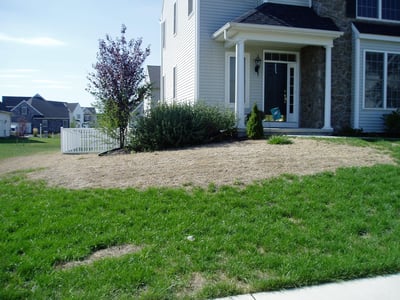 When you’re experiencing lawn problems of any sort it can be incredibly frustrating. Whether you know that you made a DIY lawn care mistake, another lawn care company messed up, or you inherited an existing problem, you want a resolution.
When you’re experiencing lawn problems of any sort it can be incredibly frustrating. Whether you know that you made a DIY lawn care mistake, another lawn care company messed up, or you inherited an existing problem, you want a resolution.
Oftentimes problems with the lawn can seemingly spring up overnight—one day your grass looked just fine and suddenly it looks terrible. No matter what the case, you’d like to understand what’s going on.
Let’s take a look at 7 of the tell-tale signs and symptoms that you have a big lawn problem at hand.
Symptoms of Lawn Problems
It can be frustrating to see your lawn experiencing problems, particularly when you aren’t sure what’s causing it. Before we delve into possible reasons, let’s look at the common symptoms that are often seen with various lawn problems.
- Loss of color overall
- Patches of discoloration
- Lesions/spots on leaf blades
- Strange grasses or weeds invading
- Grass pulling up
- Thinning turf
- Webby or powdery growth on the lawn
Lawn Problem Diagnosis & Probable Causes
Whether you’re experiencing one or more of the symptoms listed above, you obviously want to know what’s causing the problem. Let’s look at some of the most common culprits of the 7 lawn problems listed above.
It’s important to note that these problems are often misdiagnosed by well-intentioned homeowners, or sometimes even a pro, so it’s really important to find a lawn care company that knows what they’re doing. In some cases, implementing the wrong remedy can make the problem worse.
Disease
There are a number of different turf diseases that can cause more than one of the symptoms above. Getting to the bottom of which disease your lawn is struggling with is going to require a lawn problem diagnosis by a professional.
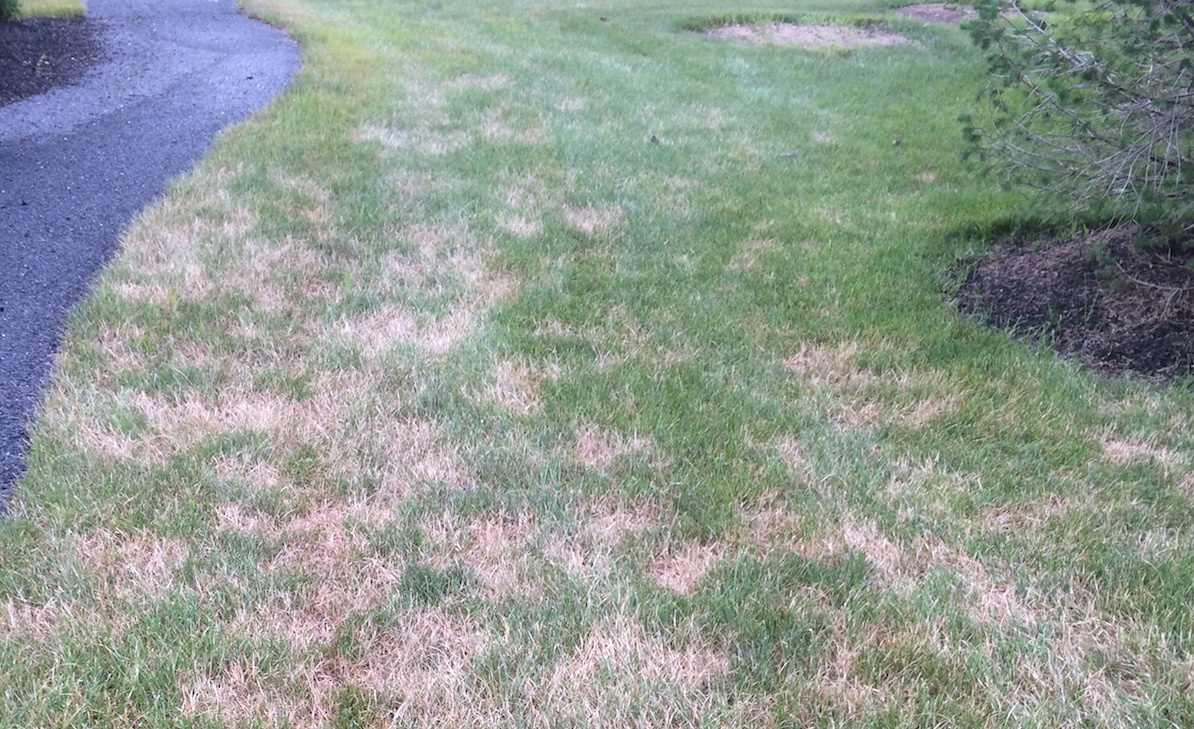
While turf diseases are pretty similar, there are some that will warrant slightly different remedies or materials. In some cases, fungicides may be needed while in others, it could just be a matter of adjusting certain cultural practices and allowing the lawn to recover as the weather changes.
Surface-Feeding Insects
The two primary surface-feeding insects that we see frequently in Allentown, Bethlehem, and Easton, PA are chinch bugs and sod webworms. Both feed on grass at the surface and can cause the lawn to wilt, turn brown, and ultimately die.
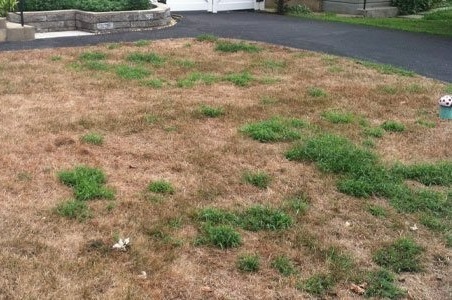
These insects can be prevented by having a lawn care program that includes preventative control products. If you haven’t already been on a program like this, professional products can be applied when you spot damage, but recognize that there may be some damaged areas where seeding will be needed.
Grubs
While chinch bugs and sod webworms feed at the surface, grubs feed beneath it, munching on your grassroots. If your grass is pulling up and you see white c-shaped pests beneath it, then you are dealing with a grub problem.
When damage is severe enough, and there are no roots left, your lawn may start rolling up like a carpet. Grubs have the potential to do thousands worth of dollars in damage, which is why it’s best to take a preventative approach to grub control.
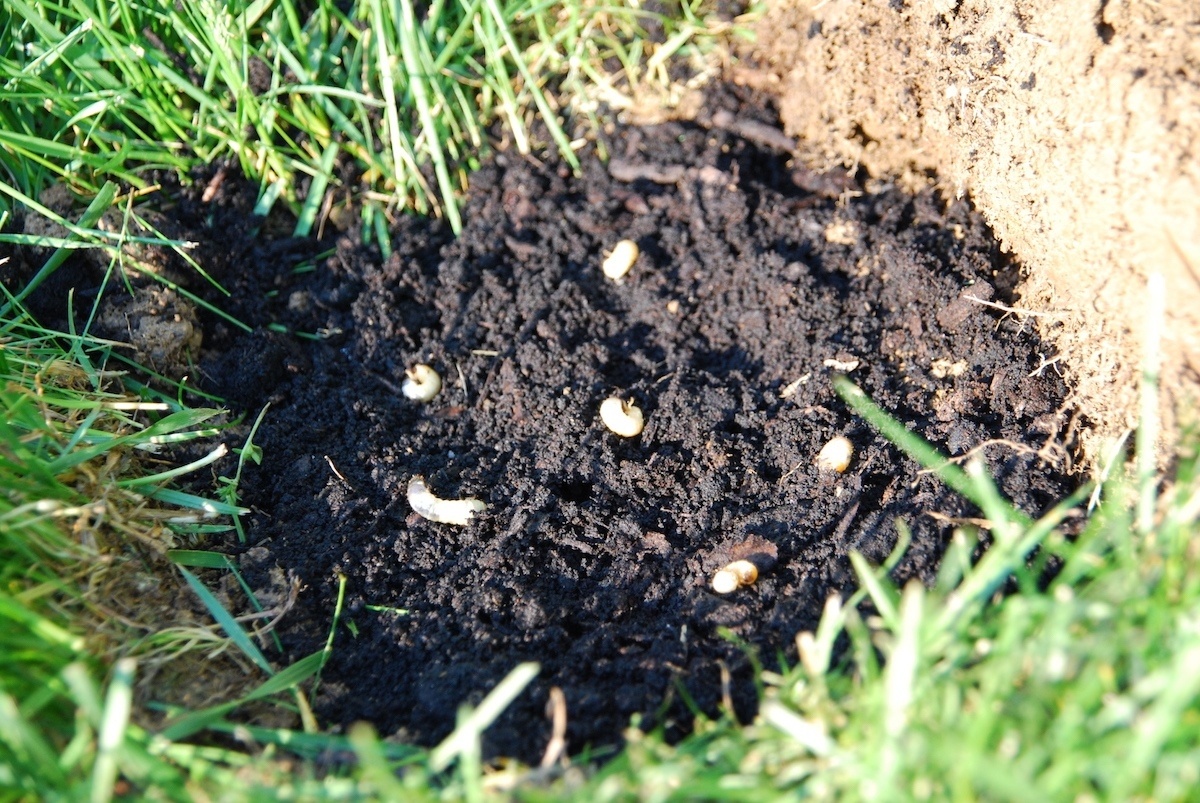
Preventative products work by taking care of young grubs as they hatch. Preventative grub control lasts all season but the application timing is important. We typically try to get preventative products down by mid-July.
If you take a “wait and see approach,” the problem is, grub damage is often not recognized until it’s severe. If it gets too late to apply a preventative product (around August) and you already have grubs, we will have to apply a curative product to take care of them. You’re also going to have to repair the damaged lawn areas with seeding in the fall.
Grassy Weeds
Many grassy weeds can be highly invasive. Upon moving into your lawn, they can begin to take over—choking out healthy turf in their path. Two of the most common invasive grassy weeds that we see in the Lehigh Valley are crabgrass and nutsedge. Both are incredibly stubborn and require a multi-pronged approach with specialized treatments.
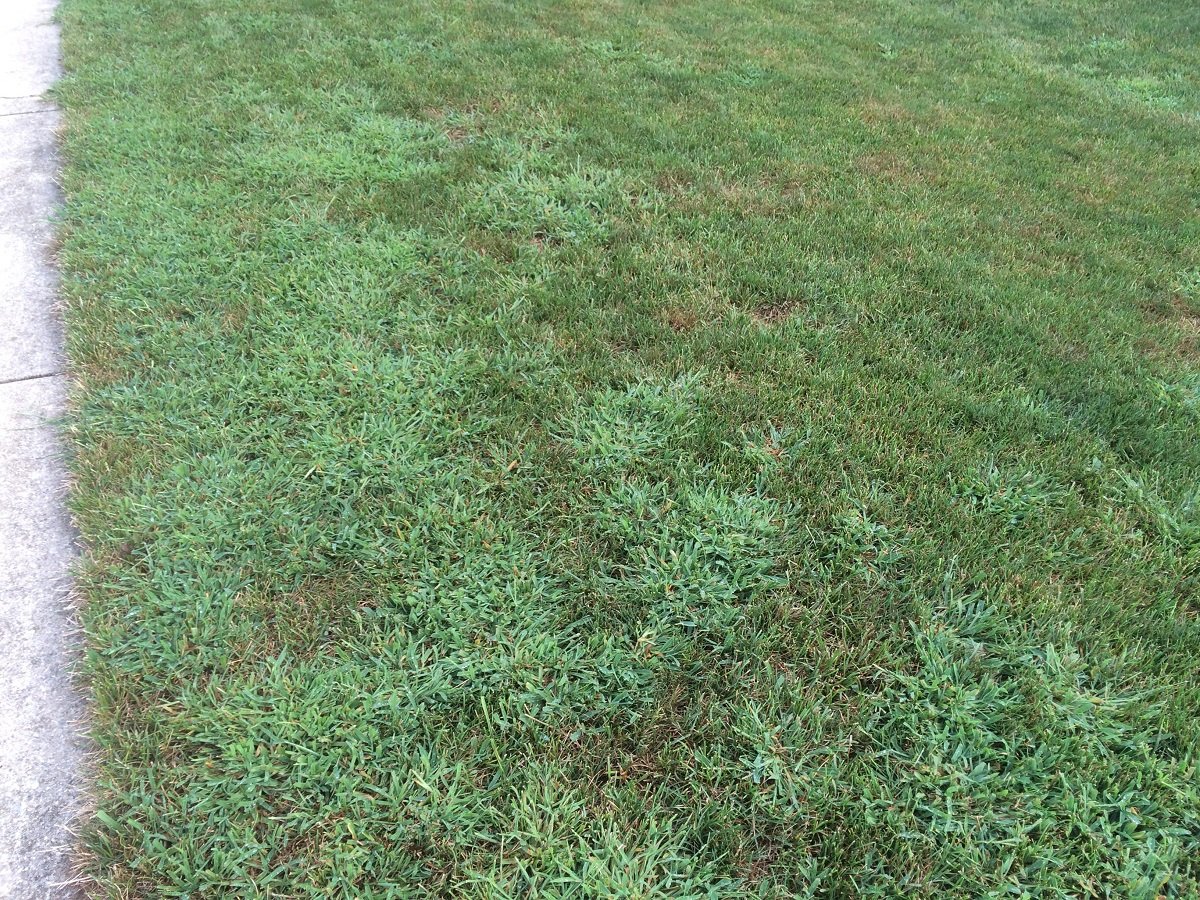
There are also other grassy weeds that occur in lawns in the Lehigh Valley. Unfortunately, many of these weeds are not able to be selectively controlled. If you suspect you have a strange variety of grass growing in your lawn, consult with a professional for identification and treatment options. This may include lawn renovation services.
Broadleaf Weeds
Another culprit of your lawn problems may be broadleaf weeds. These are easier to control, however, different times of the year means different weeds, so it’s important that your lawn care service is switching up their use of products in order to be most effective.
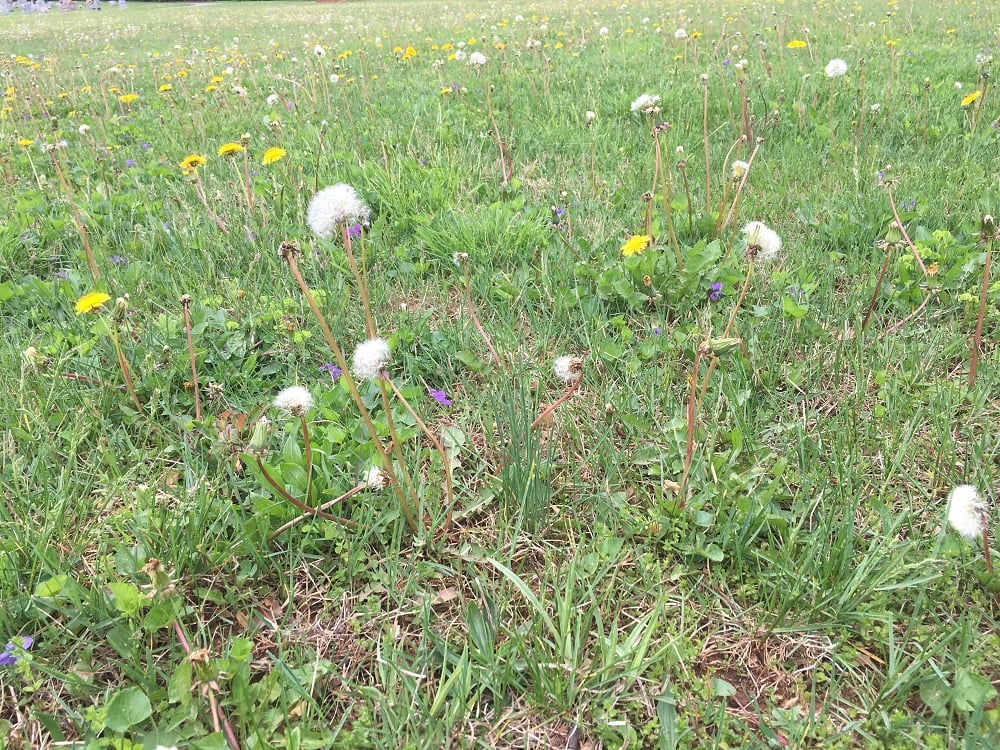
Most of these weeds have to be sprayed after they emerge, so that can mean multiple treatments throughout the year to keep them from spreading. Of course, these weeds are best prevented naturally, by having a thick, healthy lawn that chokes them out.
Improper Mowing
Most people don’t realize just how much impact mowing has on a lawn’s appearance. Improper mowing, including mowing the lawn too short, can actually lead to lawn problems, such as yellowing grass, more weeds, and an overall declining lawn.
It’s actually better to mow your grass a little higher (we recommend around 3.5 inches) in order to keep it healthy and thriving.
Improper Irrigation
We find that most homeowners recognize that under-watering their lawn can cause it to die. In general, established lawns need one to two inches of water each week. Sometimes, this can be achieved with rainfall.
But during periods of drought, you may need to supplement your lawn with additional water. However, it’s not just a lack of water that can hurt a lawn. Over-watering or even watering at less-than-ideal times (such as after dark) can also cause lawn problems.
Inadequate Fertility/Soil pH
Lawn problems might also be due to issues with your soil’s fertility or pH. In order to stay on top of your lawn’s soil pH, it’s a good idea to have a soil test performed every three years and amend the soil with recommended and/or limestone as the test indicates.
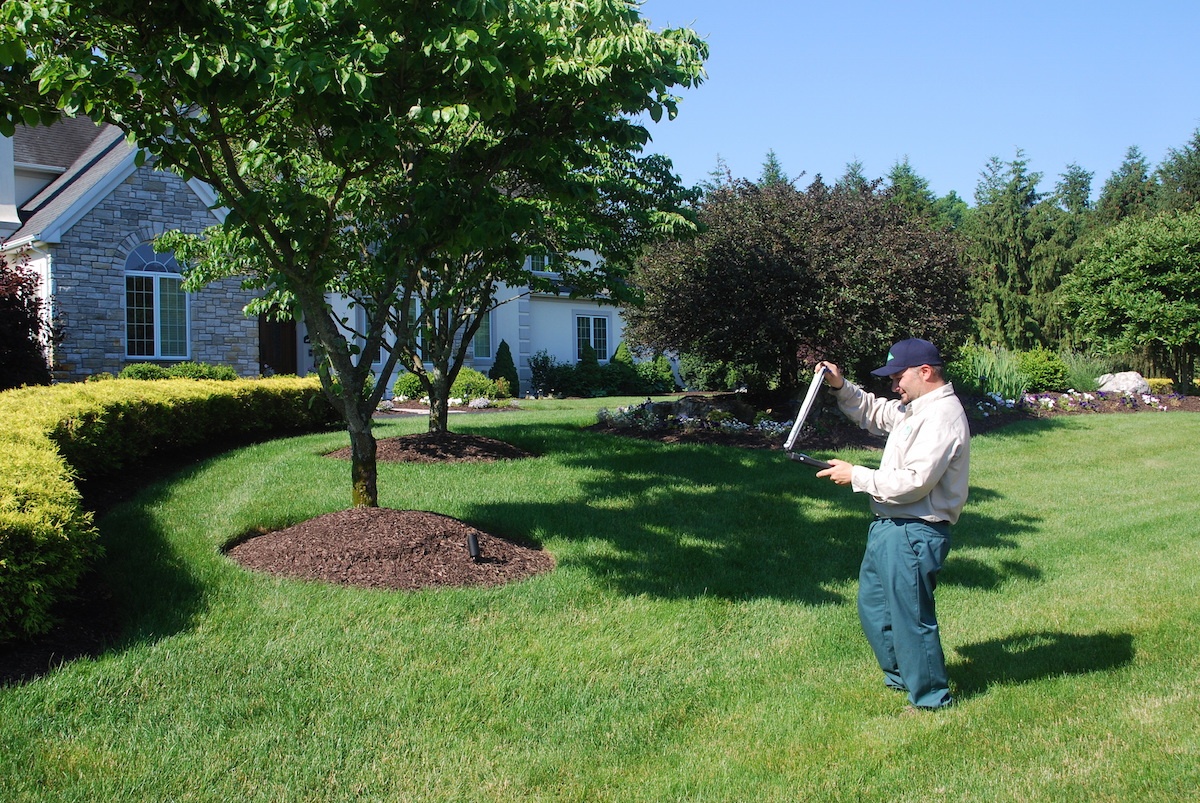
A soil test will also help you identify if your lawn has a soil fertility problem. Soil can be at a deficiency due to various environmental factors. A regular lawn care program will give a lawn what it needs, but if your soil is always running below normal, you may not be receiving the optimal results.
Checking the levels every few years and supplementing the program as needed will amend this. These additional materials can also make a difference with disease and drought tolerance, root system development, overall color, and resistance to some weeds.
Shade
Your grass needs sunlight to grow and if it’s not receiving enough then this could be a contributing factor to your lawn problems. Growing grass in shade is incredibly challenging and sometimes even impossible. A lawn care professional can help you determine whether you might need an alternative solution such as extending the mulch rings around your trees or even adding a flower bed with some shade-loving plants.
Misapplication of Product
Sometimes lawn damage is caused by the misapplication of a lawn product, such as fertilizer. If too much is applied or it’s applied incorrectly, it can cause lawn burn. Whether you’ve done this yourself or had another company make this mistake, it can be a major frustration.
Getting a Professional Lawn Problem Diagnosis
You’re probably beginning to see just how many possible diagnoses can be linked back to the symptoms we listed at the beginning. The truth is, lawns can exhibit one or more symptoms and there may be one or more problems occurring at once. That can make a proper diagnosis incredibly challenging, particularly on your own.
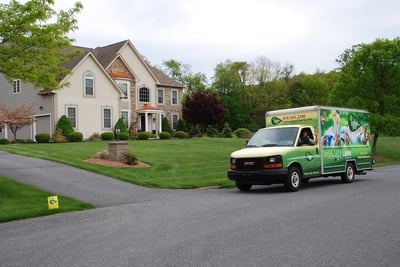 Your best bet is to hire a lawn care professional who truly understands the science behind lawns. You want to be sure that your lawn problem is properly diagnosed as time is often of the essence when it comes to treatments.
Your best bet is to hire a lawn care professional who truly understands the science behind lawns. You want to be sure that your lawn problem is properly diagnosed as time is often of the essence when it comes to treatments.
Similarly, applying the wrong solution to a problem can actually make it worse in some cases. If your lawn is important to you, and you want to get it back on track as quickly as possible, you should definitely enlist the help of a pro.
Of course, not all lawn care companies are created equal. Sometimes, it’s a so-called “pro” that got your lawn to this point in the first place. At Joshua Tree, clients who have had lawn problems caused by other lawn care companies have come to us for solutions.
That’s why making the best choice from the onset is important.
By choosing the right lawn care professional, you’ll be able to feel confident that your lawn is in good hands. That smart decision will ensure you have the beautiful and healthy lawn that you desire without lawn problems (once it’s back on track). Instead of having to learn more about problematic symptoms, you’ll know that your lawn is being handled by pros that know exactly what it needs.
If you’re ready to work with a lawn care company that knows what your grass needs at your Allentown, Bethlehem, or Easton, PA home, get in touch with us to get some free expert advice and learn more about our lawn care program options.




